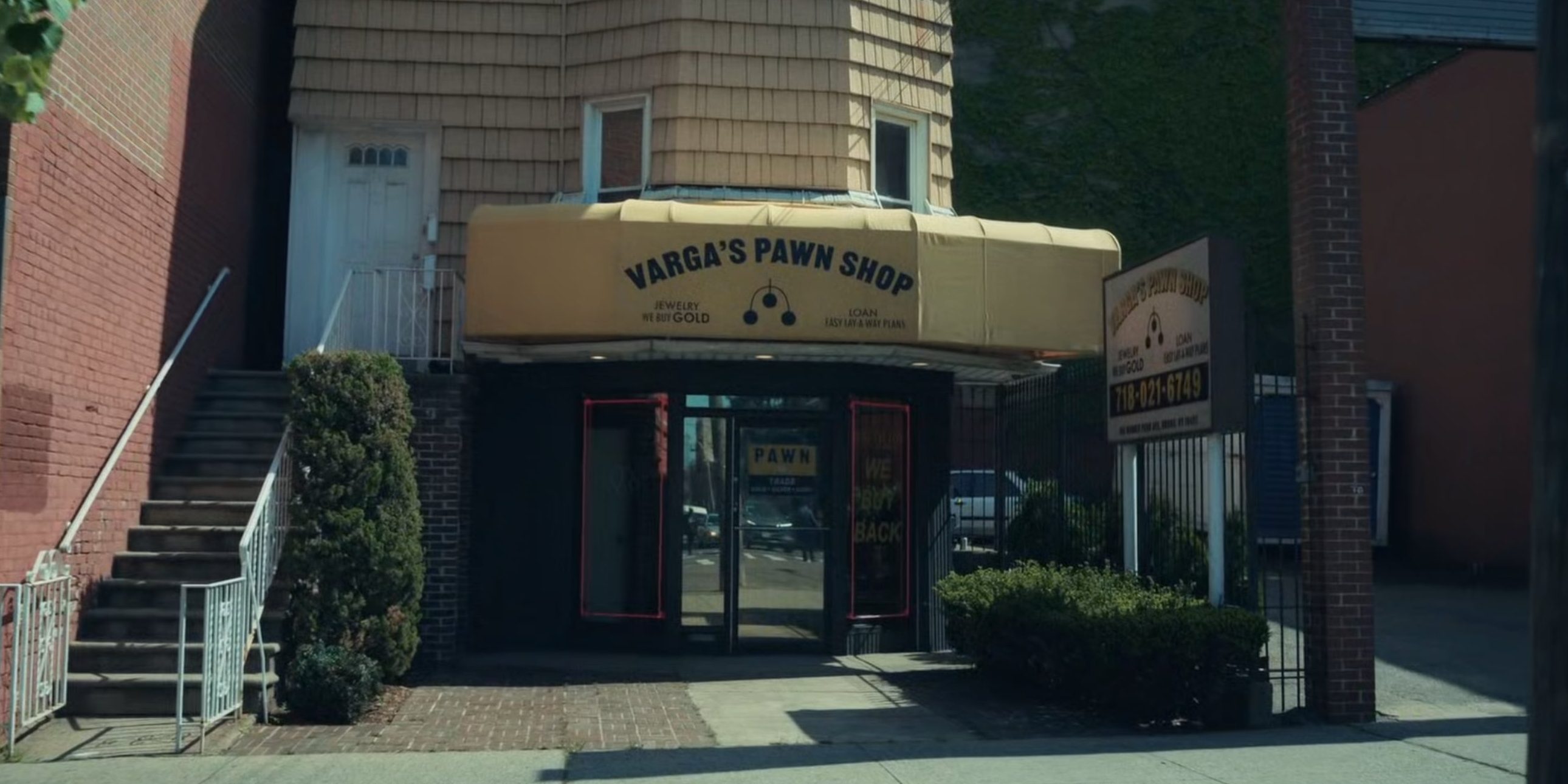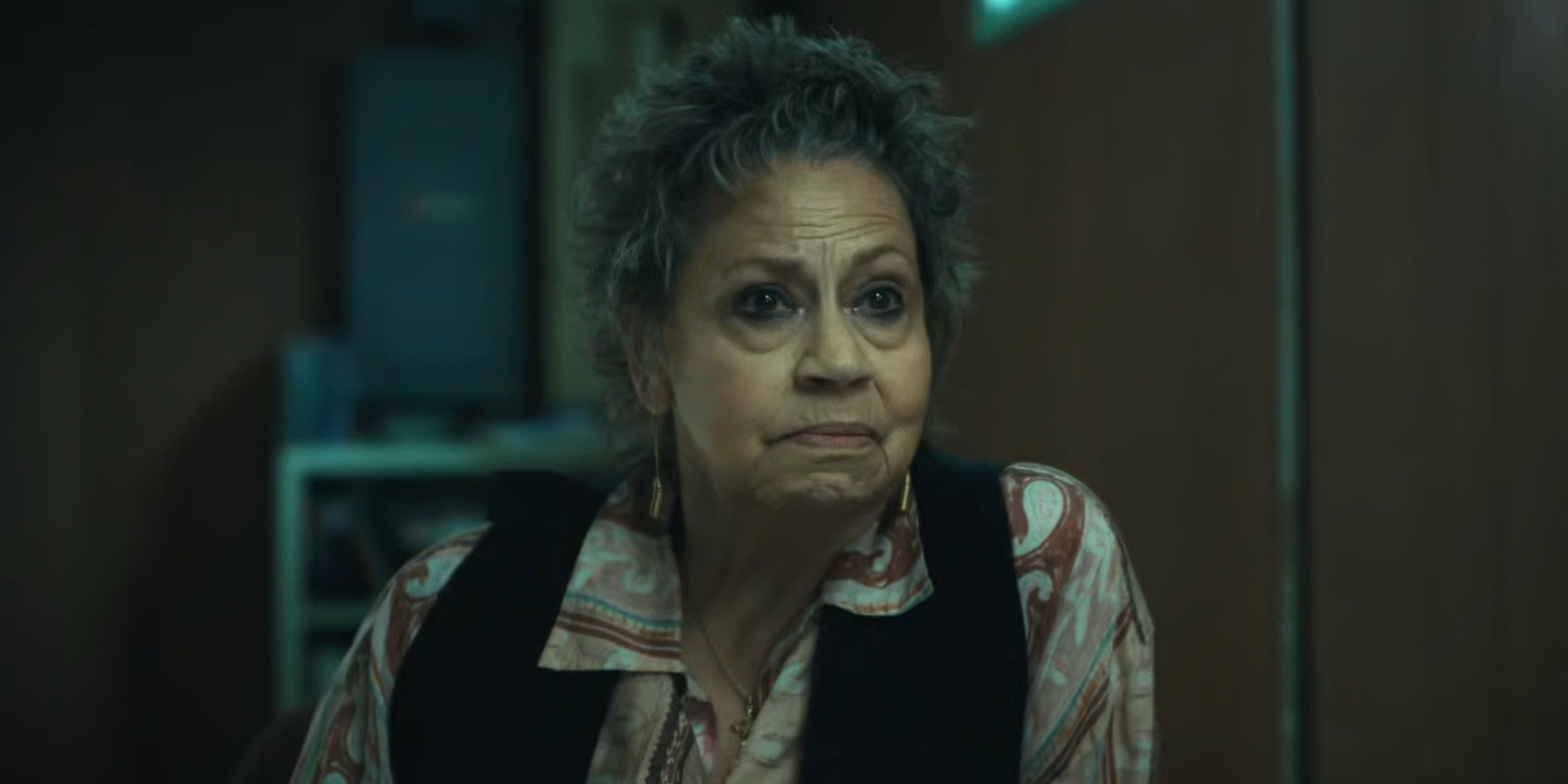‘Your Friends and Neighbors‘ follows Andrew Cooper, AKA Coop, who transitions to a life of robbery after losing his high-paying job as a hedge fund manager in a New York City firm. Drowning under the financial debts of his lifestyle and alimony payments to his divorced wife, Coop figures a way to make some cash by selling stolen items from the houses of his affluent neighbors, which he pawns off at a store named Varga’s Pawn Shop. Run by a tough woman named Lu Varga, the shop becomes a pivotal part of the narrative as the protagonist gets drawn into a life of criminality, which is a far cry from his pristine career as a financier. However, it provides a means for him to sustain his family’s exorbitant needs as the debts keep climbing through the roof.
Varga’s is a Fictional Pawn Store With No Ties to Reality

The Varga’s Pawn Store in ‘Your Friends and Neighbors’ is one of the rare everyday locales depicted in the Apple TV+ series. The story primarily revolves around opulence and wealth, which makes Varga’s shop stand out as a unique place among the other settings. However, it also plays a pivotal role narratively, especially as Coop’s life self-combusts following his firing from his job. The shop is conceived by scriptwriters Craig Gillespie, Greg Yaitanes, Jonathan Tropper, and Stephanie Laing, allowing Coop another way to make money, one that is illegal and bound to get him in trouble. While the store is situated in the Bronx area of New York, the production crew seemingly utilized a studio environment to depict the shop, likely at the CBS Studio Building at 49 East 52nd Street, New York City.
When designing the set, the team emphasized the wooden paneling and the grimy nature of the shop’s indoors, which contrasts sharply with the other modern-looking interiors within the series. Every aspect of the shop is rustic and feels down-to-earth, a detail that helps emphasize its connection with a different world, one that is far away from Coop’s reality as a wealthy financier. With money running dry and no way to regain his job, the protagonist turns to stealing watches from his neighbors, which he then sells to the pawn shop’s proprietor, Lu Varga. She takes him to the backroom area, where she offers him a discounted selling price, a fair exchange for the fact that he does not have the necessary paperwork pertaining to the item. It sets him up for his newfound career as a thief in Westmont Village, the fictional suburban area where he lives.
As the story progresses, Coop gets further entangled in Varga’s inner network as he frequents her for more stolen watches. After his second visit, she even starts an investigation into the man, hoping to find out his reasons for coming to her to sell expensive watches. In some ways, the store’s inclusion serves as a neat juxtaposition for Coop’s earlier life as a trader, which is shiny and pristine compared to his new messier existence as a desperate thief out to make some cash for his spiraling lifestyle. While visiting the store, Coop is exposed to seedier aspects of New York’s underbelly, as desperate people come in to make money from their belongings. Therefore, it plays a pivotal role narratively, even if it remains a fictional addition drawn from the imagination of the writers.
Read More: Your Friends and Neighbors: Is Westmont Village a Real Neighborhood in New York?


